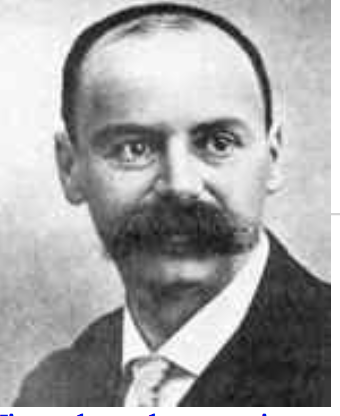
Karl Schwarzschild was born on October 9, 1873 in Frankfurt, Germany. He enrolled in the Gymnasium in Frankfurt at age 11 and became interested in astronomy. By age 17, he had published his first two papers on the theory of orbits of double stars and by age 20 he had received his doctorate from the University of Munich and was appointed research assistant at the Von Kuffner Observatory near Vienna.
In 1909, Schwarzschild’s reputation as an astronomer won him a prestigious appointment as director of the Astrophysical Observatory in Potsdam, followed in 1913, by his election to the Berlin Academy. In addition to his many contributions to the study of two variable stars, he was perhaps the first scientist to suggest that space was non-Euclidean and gave an estimate for its radius of curvature.
On November 18, 1915, Einstein submitted a paper giving an approximate solution to his field equation as it pertained to the orbit of planet Mercury. Meanwhile, Karl who had volunteered for military service in the German army, was stationed on the Russian front where he had been assigned responsibility for calculating the trajectories of military shells amidst the chaos of battle. As respite from these miseries, he was seeking an exact (rather than an approximate) solution to the field equation for Mercury’s orbit.
Finally on November 25, 1915, after a brief skirmish with David Hilbert for precedence, Einstein presented to the Prussian Academy, in Berlin, the now famous Einstein Field Equation that defines his General Theory of Relativity. Described by Nobel laureate Paul Dirac as “probably the greatest scientific discovery ever made,” this equation describes how space is warped by the presence of mass and how the warp defines the paths that objects will take as they move through space.
On December 22, just one month after Einstein’s paper, Schwarzchild wrote to Einstein providing the exact solution he had obtained using polar coordinates. He concluded with the comment, “… the war treated me kindly enough, in spite of the heavy gunfire, to allow me to get away from it all and take this walk in the land of your ideas.” Einstein was pleased to see this solution and responded:
I have read your paper with the utmost interest. I had not expected that one could formulate the exact solution of the problem in such a simple way. I liked very much your mathematical treatment of the subject. Next Thursday I shall present the work to the Academy with a few words of explanation.
A few weeks later, Schwarzchild sent another letter in which he used Einstein’s field equation to calculate the gravitational field inside a spherical non-rotating star. He discovered that the equations had a singularity when the radius of the star decreased below a certain value. At that point, spacetime would undergo an inversion and the gravitational pull would be so strong that nothing, including light would be able to escape. The star would experience a gravitational collapse and disappear into what is now called a black hole. He sent his discovery to Einstein announcing with excitement that this discovery would allow the general theory to “shine with increased purity.” However, Einstein assumed that the singularity was a mathematical anomaly that did not describe anything that could actually exist. By ignoring Schwarzchild’s discovery, Einstein missed the chance to predict the existence of black holes and further validate his theory. Meanwhile, Schwarzchild, while on the Russian front, contracted pemphigus, a virulent auto-immune skin disease. He died five months later at age 42.
Linking the progress of mathematics to the other natural scientists, Karl Schwarzchild once observed. ” Mathematics, physics, chemistry, astronomy, march in one front. Whichever lags behind is drawn after. Whichever hastens ahead helps on the others.”
